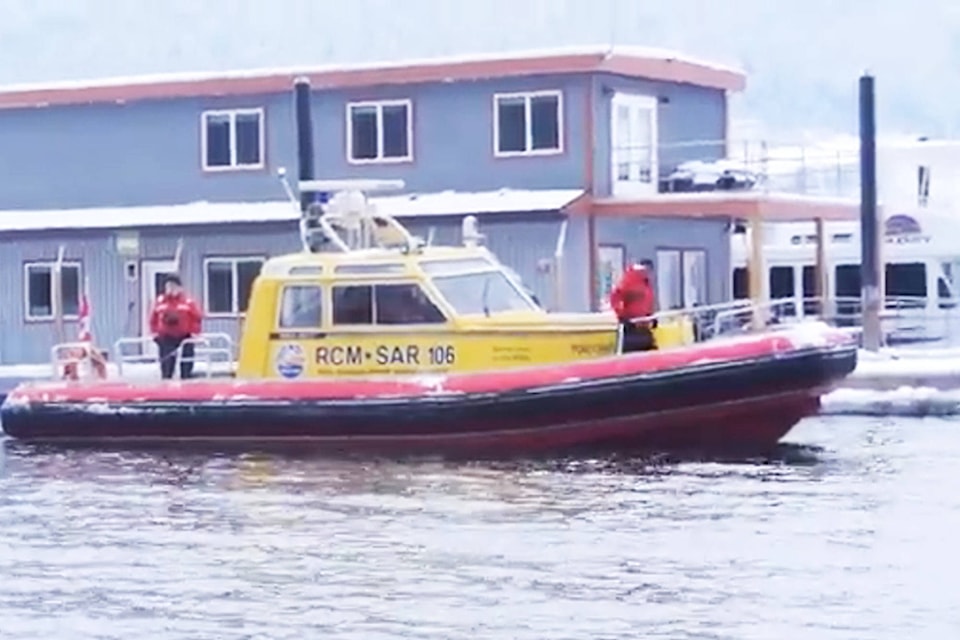A December callout prompted the Shuswap’s on-water rescue organization to train more in frigid temperatures.
On Dec. 9, the Royal Canadian Marine Search and Rescue Station #106 rescue boat was called upon to help paramedics render aid to a man at a cabin on the east shore of Seymour Arm. The cabin had no road access and one of the residents was having health issues, so the rescue boat had to ferry paramedics to the cabin and help get the elderly patient back to Sicamous.
RCMSAR station chief Fred Banham said the journey to Seymour Arm takes about an hour each way in the rescue boat.
Read More: AIM Roads responds to abuse of staff, public frustrations in Okanagan-Shuswap
Read More: Lead in drinking water not meeting federal standards at North Okanagan-Shuswap schools
Following the cold water response, the RCMSAR station doubled down on training with the gear necessary for staying safe on the deck of the fast-moving rescue boat and possibly staying alive if they have to fall into the freezing waters of Shuswap Lake in the winter. Banham said that discussion of cold water immersion is a part of the station’s annual training.
At the centre of the cold-water training are two types of suits. The rescue boat is equipped with dry suits, which are like the ones used by cold-water scuba divers. When paired with warm clothing underneath, they can keep a person warm and dry in the frigid lake water. Also at the RCMSAR volunteers’ disposal are immersion suits, which are bulkier than the dry suits and are also buoyant without the use of an additional lifejacket.
Banham said immersion suits are a common piece of safety gear on fishing vessels and are used by RCMSAR members who have to perform tasks on the deck outside their vessel’s well-heated cabins.
Read More: Former Salmon Arm residents head to Mars habitat for brain research
Read More: Salmon Arm mayor willing to invite Prince Harry and Meghan Markle to the Shuswap
Also, the suits would be donned in the event the boat hit a deadhead log or other submerged object, so the crew is ready should the vessel sink.
The RCMSAR crew have already done some indoor practice with the suits, and plan to get out on their boats in early February so they can experience the shock of the icy water and the suits’ functions firsthand.
The Dec. 9 callout was the last of 2019 for RCMSAR Station #106. The station tallied 19 missions for the year, much less than the annual average of 32, and a fraction of their busiest year in 2013 which saw them respond to 51 calls.
jim.elliot@saobserver.net
Like us on Facebook and follow us on Twitter
